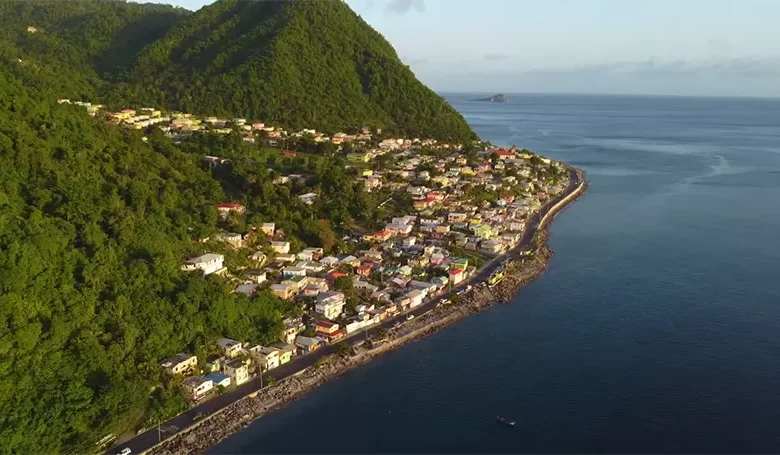Pointe Michel

Pointe Michel, located in Saint Luke Parish in the south of Dominica, is perched on an elevated delta formed by volcanic debris from the Morne Plat Pays volcano. The village, which dates back to the 1730s, was initially settled by French families such as John Baptiste Peltier’s, highlighting its historical significance.
Pointe Michel Village
Sibouli was the Kalinago name for the entirety of Pointe Michel (La Pointe), representing two particular types of fish. Today, with fewer than 2,000 inhabitants and covering an area of 7.77 km², Pointe Michel is a vibrant coastal village known for its rich cultural heritage and deep historical roots. The town, which is perched along the Caribbean Sea, offers stunning coastal views and is named after the French settler Michel, one of the early influential figures in the area.
Early Settlements and Historical Landmarks
Pointe Michel’s history is closely connected to the Indigenous people of Dominica, particularly the Kalinago, and the European settlers. After the departure of the Amerindians, the Kalinagos occupied the land, renaming Sibouli, likely due to the abundance of Sibouli fish in the nearby waters. Archaeological digs behind the Roman Catholic Church revealed pottery used by the early Amerindians, underscoring the region’s long history of human habitation.
Several prominent families who settled in Pointe Michel during the 18th century, such as the Sorhaindo, Bardouille, Dechausay, and Jean Poiree families, have left a lasting legacy, with many parts of the village named after these settlers. The village also became a hub for agricultural activity, with numerous estates such as Mount Lofty Estate, Grano Estate, Aberdeen Estate, Madrelle, and others contributing to its growth as a commercial center for coffee, sugar, and lime production.
Resilience and Rebirth
Pointe Michel has faced significant challenges over the years, particularly with the devastation caused by Hurricane David on August 29, 1979. The village was directly hit and suffered extensive damage, requiring years of rebuilding and recovery. Despite this, Pointe Michel has shown remarkable resilience, modernizing its infrastructure with potable water, electricity, telecommunications, and internet connectivity.
The village is also connected to the South of Dominica’s broader historical and natural landscape. It is near the Waitukubuli Trail Segment #2 and the Micham River, offering opportunities to explore Dominica’s rich natural beauty. The proximity to volcanic landscapes like Morne Plat Pays further adds to the area’s geological significance.
Cultural Legacy and Notable Figures
Pointe Michel is known for its historical significance and cultural contributions. The village is the birthplace of Dame Mary Eugenia Charles, Dominica’s first female Prime Minister born on May 15, 1919. Another notable figure is actress Alphonsia Emmanuel, born in 1956, who has gained international recognition for her work in film and theatre.
The cultural vibrancy of Pointe Michel is also reflected in its music. The 1967 calypso song “Pointe Michel Girls” celebrates the traditional musical styles of the local women, a tradition continued by artists like Ophelia Olivacee Marie and the First Serenade band.
Pointe Michel Today
Pointe Michel remains vital to Saint Luke Parish, offering a blend of historical depth and modern amenities. It is a village that embodies Dominica’s resilience and cultural richness, making it an essential destination for anyone exploring the island’s history and heritage. Whether visiting the archaeological sites, enjoying the scenic coastal views, or learning about the influential figures born in the village, Pointe Michel offers a unique and immersive experience in the heart of Dominica’s South.




